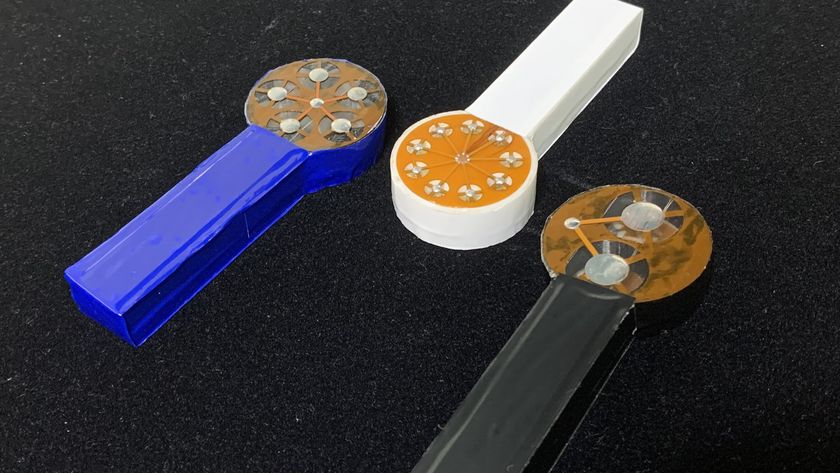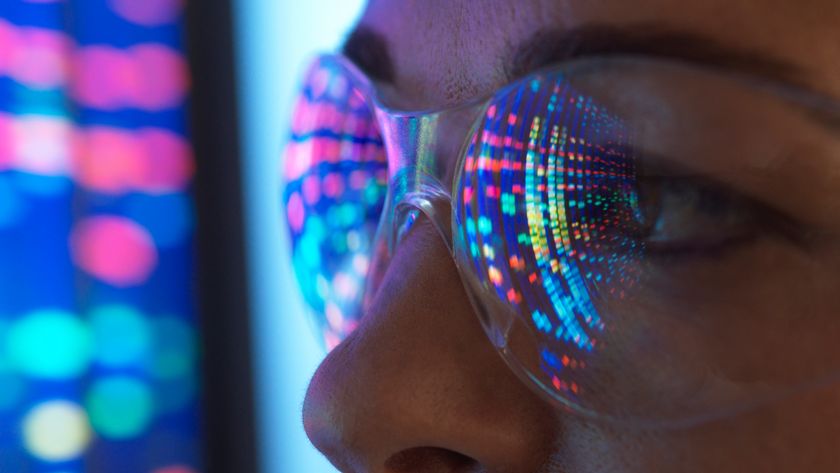
Virtual reality can make adults see the world through a child's eyes, new research suggests.
In the study, adults who inhabited the virtual body of a child saw objects in the world as bigger, associated more readily with childlike words and chose to inhabit a virtual childish room versus a more grown-up one.
The findings, published today (July 15) in the journal Proceedings of the National Academy of Sciences, raise the possibility that use such techniques could help bridge the gap between parents and their children, "to give parents the feeling of what it's like to be their children," said study co-author Mel Slater, a computer scientist at the University of Barcelona and University College London.
Body illusions
The body's perception of itself is incredibly malleable. For instance, in the classic rubber hand illusion, participants sit with one hand obscured by a screen and a rubber hand placed nearby. When a researcher strokes or touches the fake hand, the study subject feels as if the hand is part of their own body. [10 Things That Make Humans Special]
Other experiments have shown that virtual reality (VR) can have similar embodiment effects. For instance, slim people who virtually inhabit larger bodies perceptually take on the large body. That embodiment may even translate into different views: Slater and his colleagues recently showed that light-skinned people in dark-skinned avatars exhibit less racism and hostility toward dark-skinned people on tests of implicit bias, or unconscious prejudice.
Child's world
Sign up for the Live Science daily newsletter now
Get the world’s most fascinating discoveries delivered straight to your inbox.
To dig deeper into the effects, Slater and his colleagues immersed 30 adults in a virtual reality world in which they inhabited either the body of an adult or the body of a 4-year-old. The participants wore headgear and motion-tracking sensors so that each of their movements was mirrored in real-time by their avatar as they did gentle stretches for several minutes. [Image Gallery: See the World From A Child's Eyes ]
In both groups, objects seemed bigger in the virtual world, but the effect was much more pronounced in the child condition, likely because an adult in a child's body perceives objects larger in relation to their virtual selves.
People inhabiting the child's point of view also chose a childishly decorated room in the virtual environment over a more neutral one. And in a task designed to measure subconscious bias, those inhabiting the child's body were quicker to associate themselves with childish words.
In a second experiment with 16 people, when the motion of the adult and the child avatar were no longer synchronized, the illusion was removed.
Though in the experiment people easily entered a child's view of the world, it's not clear how deep this perceptual shift goes or how long it lasts after the virtual reality experience.
Slater speculates that this illusion may help people more easily connect to their own childhood memories.
"It kind of follows logically if you adjust your perception to be a childlike perception, where does that come from, maybe it gives you memories of what it was like to be a child," Slater told LiveScience.
And it would be fascinating to see how far into the psyche this effect extends, said Salvatore Aglioti, a social neuroscientist at the Sapienza University of Rome, who was not involved in the study.
"Is it possible that once you get into a very profound embodiment you start talking in a childish way?" Aglioti said, adding that the findings could theoretically have other applications.
For instance, embodying a person from a marginalized group may help others to better understand that viewpoint, Aglioti said in an interview.
Follow Tia Ghose on Twitter and Google+. Follow LiveScience @livescience, Facebook & Google+. Original article on LiveScience.com.

Tia is the managing editor and was previously a senior writer for Live Science. Her work has appeared in Scientific American, Wired.com and other outlets. She holds a master's degree in bioengineering from the University of Washington, a graduate certificate in science writing from UC Santa Cruz and a bachelor's degree in mechanical engineering from the University of Texas at Austin. Tia was part of a team at the Milwaukee Journal Sentinel that published the Empty Cradles series on preterm births, which won multiple awards, including the 2012 Casey Medal for Meritorious Journalism.











